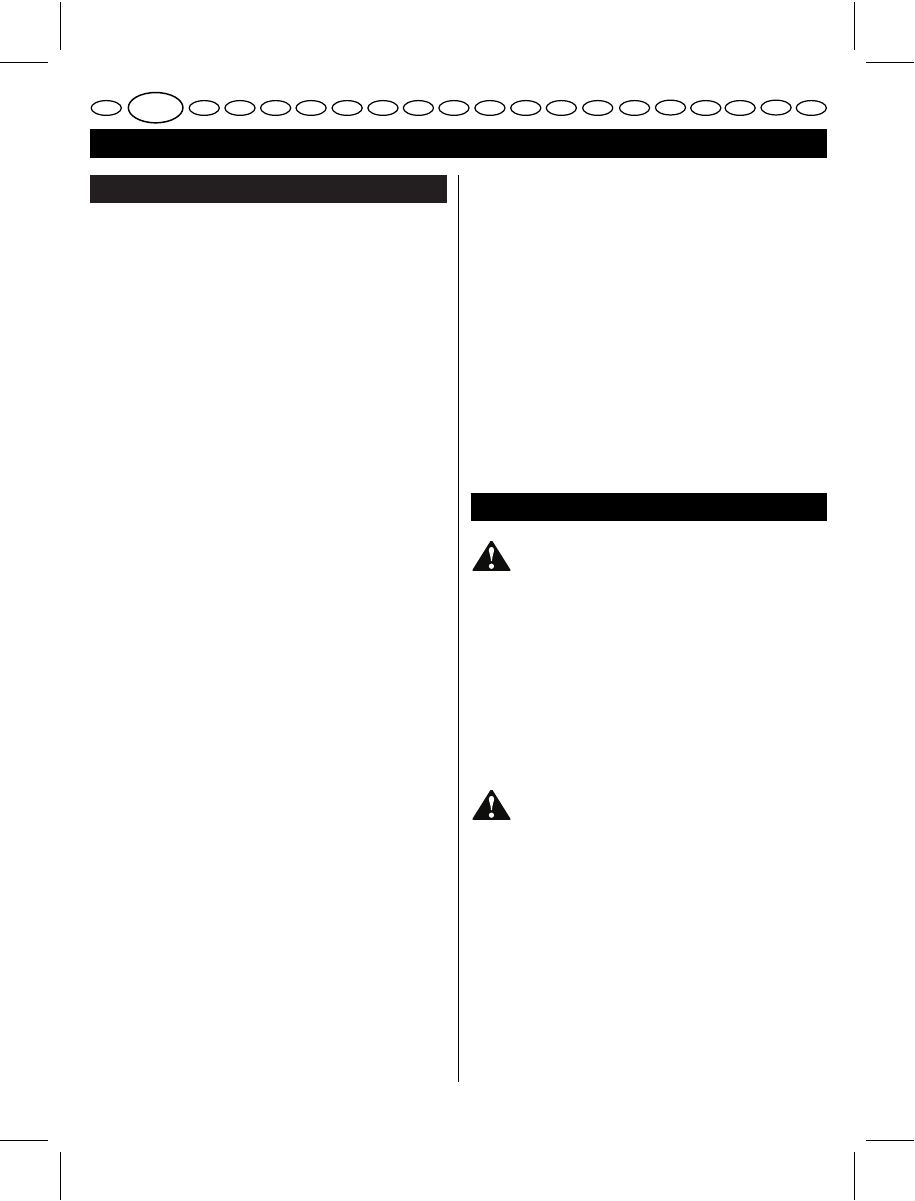
OPERATION
CHAMFERING (Fig. 6)
The planer is designed with a chamfering groove in the
front shoe to chamfer edges of boards as shown.
Before making a cut on good lumber, practice cutting on
scrap lumber to determine the amount to be removed.
Follow these steps to chamfer:
■ Clamp the work securely.
■ Hold the front handle with your left hand and the rear
handle with your right hand.
■ Place the chamfering groove on the surface to be cut.
■ Start the planer and let the motor reach maximum
speed.
■ Hold the planer firmly and push it forward into the
work, using a slow, steady motion.
■ Apply downward pressure to keep your planer flat at
the beginning and the end of the work surface.
PLANING EDGES AND MAKING RABBET
CUTS
The planer comes with an adjustable edge guide for
precision edge planing and rabbet cutting. Attach the
edge guide to either side of the planer for planing edges
and attach the edge guide to the left side for making
rabbet cuts.
TO ATTACH THE EDGE GUIDE FOR PLANING EDGES
(Fig. 7)
Follow these steps to attach the edge guide for
planing edges:
■ Unplug the planer.
■ Attach the bracket (13) to the desired side of the
planer using the knob bolt (12).
■ Attach the edge guide (14) to the bracket using the
knob nut (15) and the carriage head bolt (16).
■ Tighten the retaining knob securely.
TO PLANE EDGES (Fig. 8)
Follow the directions in the “Planing” section earlier in
this manual. Hold the edge guide firmly against the edge
of the work surface.
TO ATTACH THE EDGE GUIDE FOR MAKING
RABBET CUTS (Fig. 9)
Follow these steps to attach the edge guide for making
rabbet cuts:
■ Unplug the planer.
■ Attach the bracket to the left side of the planer using
the knob bolt.
■ Attach the edge guide loosely to the bracket using the
knob nut and the carriage head bolt.
■ Adjust the edge guide to the desired width for the
rabbet cut.
■ Tighten the retaining knob securely.
TO MAKE RABBET CUTS (Fig. 9)
Follow the directions in the “Planing” section earlier in this
manual. Hold the edge guide firmly against the edge of
the work surface. The depth of the rabbet is determined
by the depth of the cut and the number of passes made
along the work surface. The maximum depth of the rabbet
cut is 8,5 mm and has to be cut in 2.5 mm passes,
or less, to reach the desired depth. The width of the
rabbet cut is adjustable by moving the edge guide.
MAINTENANCE
WARNING
When servicing, use only identical Ryobi
replacement parts. Use of any other part may
create a hazard or cause product damage.
GENERAL
All parts represent an important part of the double
insulation system and should be serviced only at an
authorized service center.
Avoid using solvents when cleaning plastic parts.
Most plastics are susceptible to damage from various
types of commercial solvents and may be damaged by
their use. Use clean cloths to remove dirt, carbon dust, etc.
WARNING
Do not at any time let brake fluids, gasoline,
petroleum-based products, penetrating oils, etc.
come in contact with plastic parts. They contain
chemicals that can damage, weaken, or
destroy plastic.
Electric tools used on fiberglass material, wallboard,
spackling compounds, or plaster are subject to
accelerated wear and possible premature failure because
the fiberglass chips and grindings are highly abrasive to
bearings, brushes, commutators, etc. Consequently,
we do not recommend using this tool for extended work
on these types of materials. However, if you do work with
any of these materials, it is extremely important to clean
the tool using compressed air.
11
GB
English
F D E I P NL S DK N FIN GR H CZ RUS PL
RO
SLO TR
HR
EPN-6082-7582N 3/08/06 11:24 Page 11


















